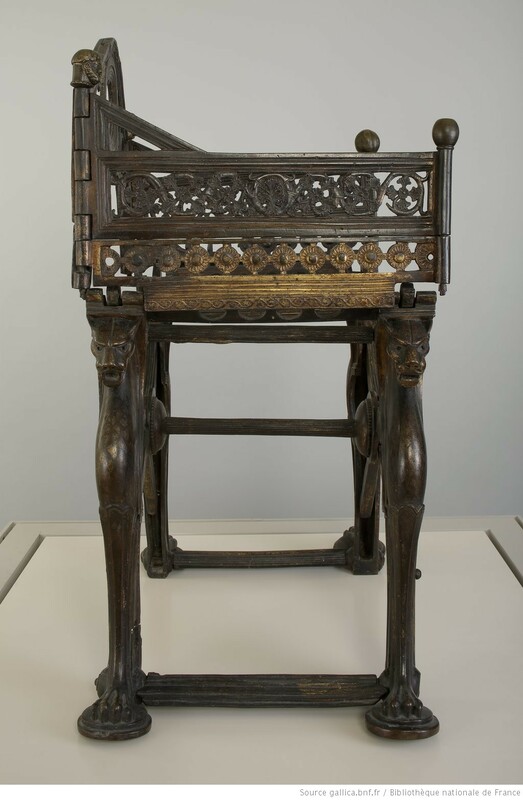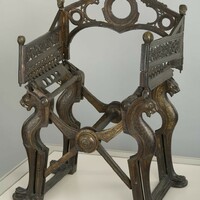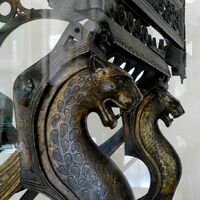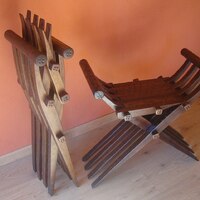Throne of Dagobert
Type:
Seats
Date:
Possibly seventh century parts with later reconstruction
Location or Findspot (Modern-Day Country):
France
Medium:
Gilt-bronze
Dimensions:
104 × 82 cm
Description:
Dagobert was the powerful Christian king of the Merovingians (r. 629–39), a royal dynasty that had united Gaul (France) and ruled there for three centuries. His alleged throne is preserved in the abbey church of Saint-Denis, which Dagobert supposedly founded and in which he was later buried. Although much restored, parts of the cast, chiseled, and partly gilded bronze chair may date to the seventh century, including the heads, chests, and paws of felines that form the four legs of the originally folding seat. As the only object of its type, it has been very difficult (and controversial) to date. Although it has sometimes been associated with Eligius, the famous Merovingian metalworker, it may also be a Carolingian copy of an antique model.
In form it emulates the ancient Roman sella curulis, a symbol of power upon which certain political or military authorities were permitted to sit. The connotation of power that had developed around such folding seats was maintained throughout the Middle Ages, although most preserved medieval chairs are associated with bishops rather than kings. The French emperor Napoleon briefly sat in Dagobert's chair in 1805.
In form it emulates the ancient Roman sella curulis, a symbol of power upon which certain political or military authorities were permitted to sit. The connotation of power that had developed around such folding seats was maintained throughout the Middle Ages, although most preserved medieval chairs are associated with bishops rather than kings. The French emperor Napoleon briefly sat in Dagobert's chair in 1805.
Relevant Textbook Chapter(s):
4
Repository and Online Resources:
• Read more about the throne on the website of the Bibliothèque nationale de France.
Image Credits:
Bibliothèque nationale de France, Wikimedia Commons




